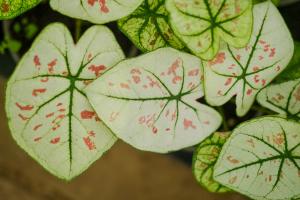How to Propagate Elephant Ear Plant
Introduction
If you鈥檙e looking to expand your garden or simply propagate more plants, elephant ear plant is an excellent plant to start with. These plants have lush, large leaves that add a tropical vibe to any setting. Elephant ear plants can be propagated in several ways, including division, stem cuttings, and root cuttings. In this article, we will discuss the steps for propagating elephant ear plants from stem cuttings.
Step 1: Gather Materials
Before you begin, you need to make sure you have all the necessary materials. For propagating elephant ear plants, you will need:
- A healthy elephant ear plant
- Pruning shears or a sharp knife
- Rooting hormone powder
- A small pot filled with potting mix
- Water
Step 2: Take Stem Cuttings
The first step in propagating elephant ear plants is to take stem cuttings. You want to select a healthy plant with several stems. Use pruning shears or a sharp knife to cut a section of a stem with two or three leaves. Make sure to cut at a 45-degree angle to promote healthy growth.
Step 3: Apply Rooting Hormone Powder
Next, dip the cut end of the stem cutting into rooting hormone powder. This will help to stimulate root growth and increase your chances of success.
Step 4: Plant the Stem Cutting
Now it's time to plant the stem cutting in a small pot filled with potting mix. Make a small hole in the potting mix and gently insert the stem cutting into the soil. Make sure the bottom leaves sit just above the soil line.
Step 5: Water the Cutting
After planting, give the cutting a good watering. Make sure the soil is moist, but not saturated. You want to keep the soil consistently moist for the first few weeks after planting to help establish the new plant.
Step 6: Provide the Right Environment
In order for the stem cutting to propagate successfully, you need to provide the right environment. Elephant ear plants prefer warm, humid conditions, so make sure you keep the soil moist and provide adequate humidity. You can also cover the pot with a plastic bag to create a mini greenhouse environment.
Step 7: Wait for Roots to Develop
It will take several weeks for roots to develop on the stem cutting. Keep checking the pot to make sure the soil stays moist and provide adequate light (but not direct sunlight). Once you see new growth, you know that the stem cutting has successfully rooted.
Conclusion
Propagating elephant ear plant from stem cuttings is an easy and fun way to grow your plant collection. With the proper tools and care, you should have no trouble creating new plants. Remember to be patient and provide a warm, humid environment for the stem cutting to root. Good luck and happy propagating!

 how many times do yo...
how many times do yo... how many planted tre...
how many planted tre... how many pine trees ...
how many pine trees ... how many pecan trees...
how many pecan trees... how many plants comp...
how many plants comp... how many plants can ...
how many plants can ... how many plants and ...
how many plants and ... how many pepper plan...
how many pepper plan...































